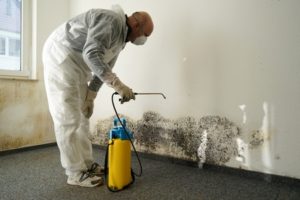Here’s What You Should Know about Mold Remediation

Water may be the sustainer of life, but it is also the catalyst for unwanted mold. Any water source, from a plumbing leak to standing stormwater can generate mold in as little as 24 hours. Once mold makes itself comfortable in a home or business, the problems begin. Fortunately, many experts specialize in mold remediation to resolve water damage, apply structural drying, and remove mold for good.
The Mold Basics
Mold exists in the form of microscopic spores, which are present in virtually all indoor and outdoor environments. Since they gloat through the air, they can easily enter buildings through windows, doors, HVAC units, and on clothing and unsuspecting pets. Since mold spores love moisture, they reproduce the instant that they find a nice collection of accumulated water. Many people identify mold by its smell long before they can visually identify it; this is because mold gives off a strong, musty odor that’s very distinct.
However, an unpleasant odor is far from the only unwanted trait of mold. Large quantities of mold are known to pose major health risks to humans and animals alike, especially in the form of allergy symptoms like respiratory problems, eye irritation, sinus congestion, headache, and skin irritation. There is also toxic mold, which is any mold that produces mycotoxins, which can even lead to neurological problems and death.
The Process of Mold Remediation
If mold is found in a home or business, remediation is an absolutely vital step of the process to removing not only the mold itself but the source of the mold. Once a mold remediation specialist uses specific technologies to detect all mold and hidden water sources, the next step is to prevent the spread of mold with the use of containment procedures. Applying a negative air chamber, for instance, isolates the area contaminated by mold and provides enough negative air pressure to keep the mold spores from spreading during cleanup.
Next, air filtration equipment is brought in to suck all mold spores out of the air. This technique essentially scrubs and purifies the air. Then it is finally time to remove the actual mold, a very delicate process that not only requires antifungal and antimicrobial treatments on mold colonies but also the removal of all infested porous materials like drywall and carpeting.
This complex procedure should always be left to trained professionals.
